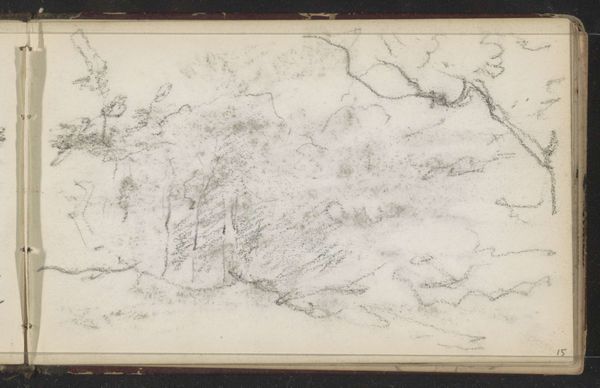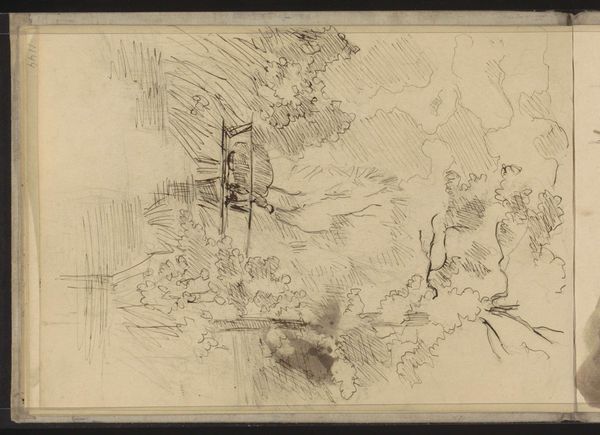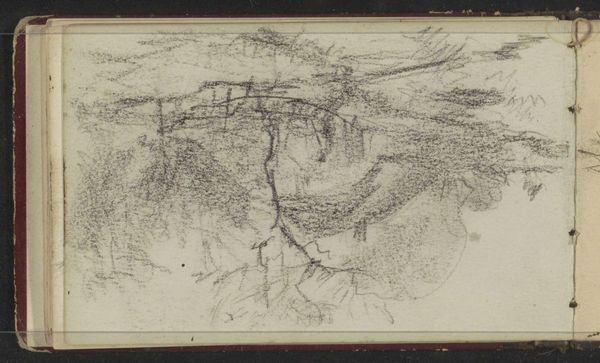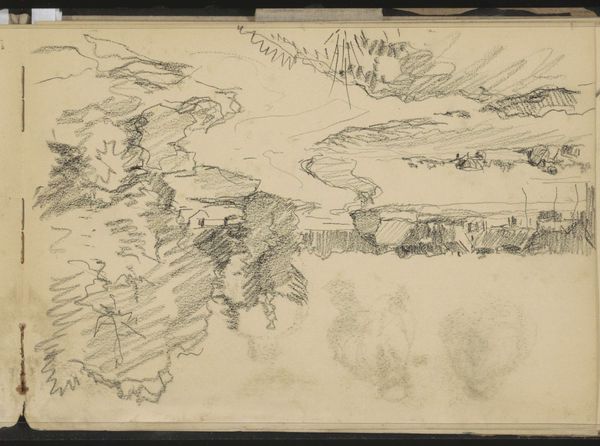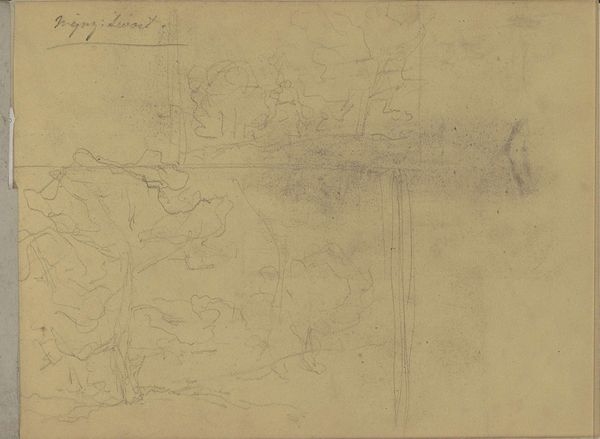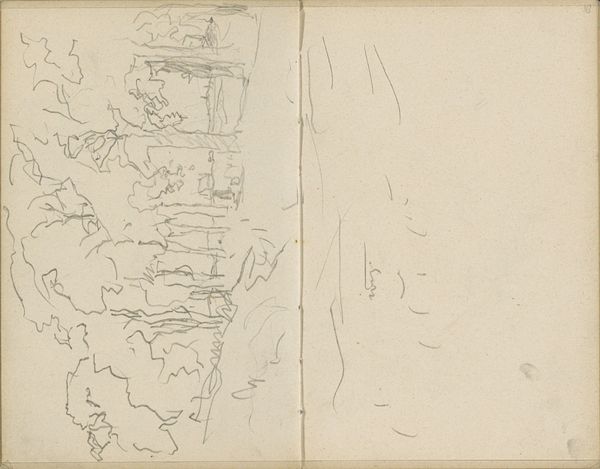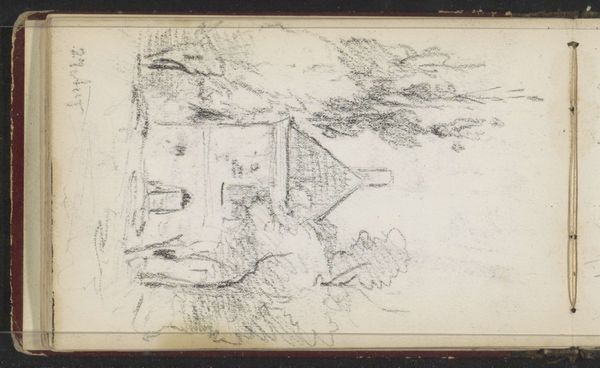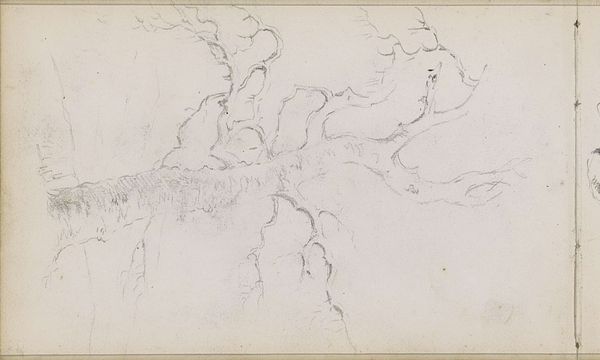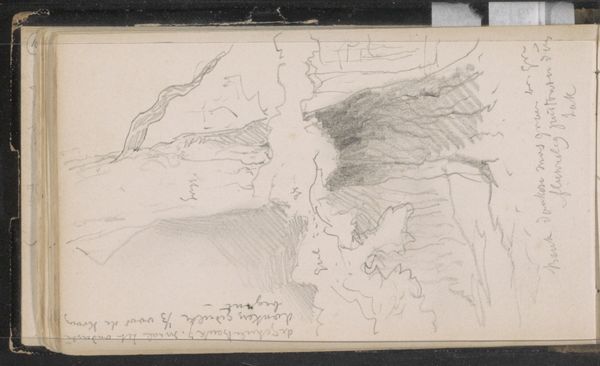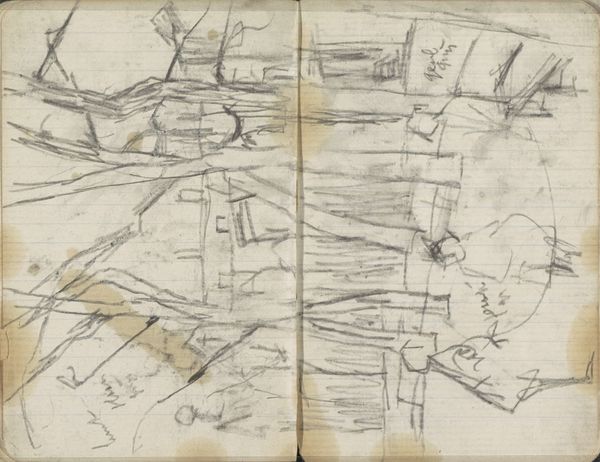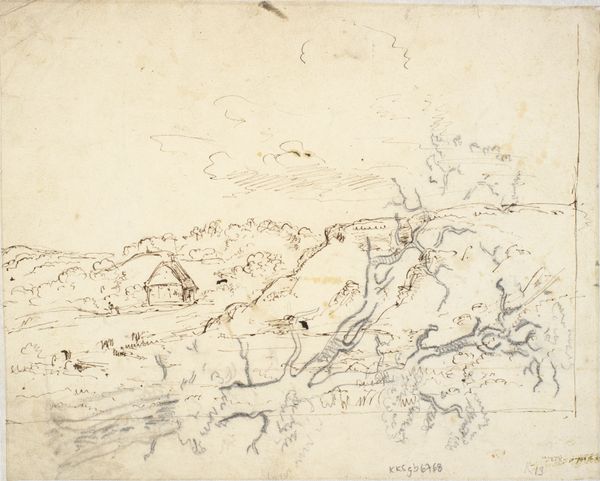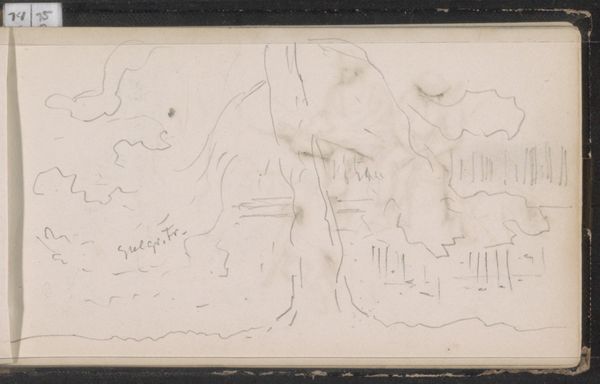
Dimensions: height 101 mm, width 157 mm
Copyright: Rijks Museum: Open Domain
Editor: This is Willem Cornelis Rip’s "Landschap met bomen en een brug," or "Landscape with trees and a bridge," a pencil drawing from around 1891-1892. It's quite gestural, almost fleeting. What layers of meaning can you find in this work? Curator: Well, this piece, though seemingly a simple landscape sketch, speaks volumes about the socio-political climate of the late 19th century. The Industrial Revolution had profoundly impacted the relationship between people and nature, sparking anxieties about ecological disruption. Do you see how Rip's impressionistic style, the quick strokes and almost hesitant lines, could reflect that unease? Editor: I do, now that you mention it. There's a sense of transience, like he's trying to capture something before it disappears. So you're saying this isn't just about trees and a bridge? Curator: Exactly. The Romantics before Rip saw nature as sublime. Here, the tentative, sketchy quality can speak to the artist’s awareness of humanity’s impact, and even the fragility of the natural world. Think about the increasing urbanization of the Netherlands during that period and consider who had access to green spaces, and how this might comment on those socio-economic dynamics. Editor: So the drawing becomes a kind of subtle protest, or at least a commentary? A questioning of progress, perhaps? Curator: Precisely. It makes us question what is being built and at what cost. Where have the marginalized communities been moved to so that the elites may travel easily over that bridge? Editor: Wow, I never would have looked at a landscape that way. It gives me a new way of interpreting so many other pieces of art, thank you. Curator: It shows how art isn’t just about what’s on the surface, but about the deeper connections it makes to the world around it. It's all interconnected!
Comments
No comments
Be the first to comment and join the conversation on the ultimate creative platform.
